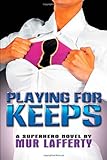If I were to set about trying to build yet another fantasy MMORPG, here is what I would do…
I’d start with EVE Online.  There are many reasons for this, the first being that I don’t mind having zones.  Lots of people will tell you that you have to have a giant seamless world, but I always ask them “What seamless worlds are you playing in?”  They always say World of Warcraft.  But they are only half right.  Yes, you can run from one end of a continent to the other without zoning.  You can fly on a griffin or other travel beast and cross no zone lines.  But how do you play the game?  Most people are in instances, dungeons and battlegrounds, and crossing from one continent to another makes you zone.  Warcraft has seams, they’ve just gone a long way to hide them from you.  EVE does too, but thankfully for them their Sci-Fi setting makes it easy to throw up gates and wormholes and faster than light travel and hide them in plain sight.  In my fantasy world, I’d have large sprawling zones.  Some zones would be city zones where a large city rests at the center and is surrounded by farmland and sparse wilderness.  Some zones would be town zones where it is mostly wilderness with a sprinkling of small villages and towns, two to five per zone, just a small cluster of buildings or an inn at a cross roads.  And some zones would be full on wilderness with caves and dungeons and evil.
Players would be able to own and run the small villages and towns, possibly even city blocks in the large cities (but not the whole city – the advantage of controlling part of a city would be in the nearness of so many other people, the disadvantage would be that you have to share the city – think of cities as being the trade hubs of the game).
When you want to leave a zone, you would go to a “crossroads”, of which there might be several on each zone at the edges. Â From the crossroads you would use the signpost and it would tell you which zones you could get to from here. Â Players would be allowed to choose if their journey was “safe” or “unsafe”. Â A “safe” journey would simply zone you directly to your destination. Â An “unsafe” journey would randomly generate an adventure zone with one or more encounters that you would need to cross. Â These unsafe adventure zones would have two exits, one where you start would be back to where you came from and the one at the other end (not necessarily the opposite side, the path through could wind around and end up anywhere on the zone perimeter) would take you to your destination.
The point here is that there would exist in the game shared content raids (the zones I mentioned earlier with caves and dungeons and evil) with spawn timers and event cycles and so on, and there would exist instanced travel content where a player or group of players (or raid full of players) could go thwart evil unhindered by other players (an added bonus could be that clearing a road of bandits and other nasties could have an impact on the prices of NPC trade goods between the two end points of the journey). Â As well there could also be “pocket” zones that would work more like traditional instances in other game – perhaps players, from a village or town, can accept a posted bounty or task that sends them either immediately into their own instance or directs them to a nearby crossroads where they can select their instance from the signpost.
Of course, I’m just spit-balling here. Â But I think this sort of thing would be a very interesting idea to pursue. Â Another day, I’ll go into how I’d apply EVE’s character design/building to a fantasy game as well…
 Mur Lafferty crafts a world where superheroes must be licensed to practice, and are paid by the city through tax revenue. Â A world where those with powers apply to the Academy and have their powers tested. Â If you are deemed worthy, you get a name and a suit and get to fight crime. Â If you are deemed weak, you get to try and live like a normal person and try to forget your aspirations of heroism. Â This is the world of
Mur Lafferty crafts a world where superheroes must be licensed to practice, and are paid by the city through tax revenue. Â A world where those with powers apply to the Academy and have their powers tested. Â If you are deemed worthy, you get a name and a suit and get to fight crime. Â If you are deemed weak, you get to try and live like a normal person and try to forget your aspirations of heroism. Â This is the world of  This weekend I finally turned the last page of Cherie Priest’s
This weekend I finally turned the last page of Cherie Priest’s